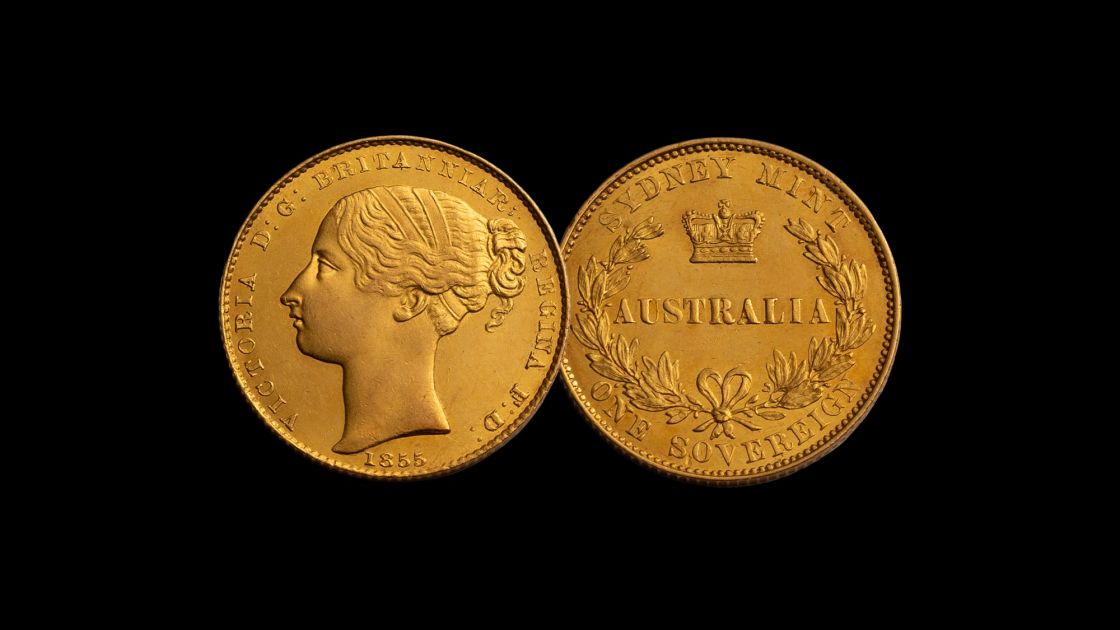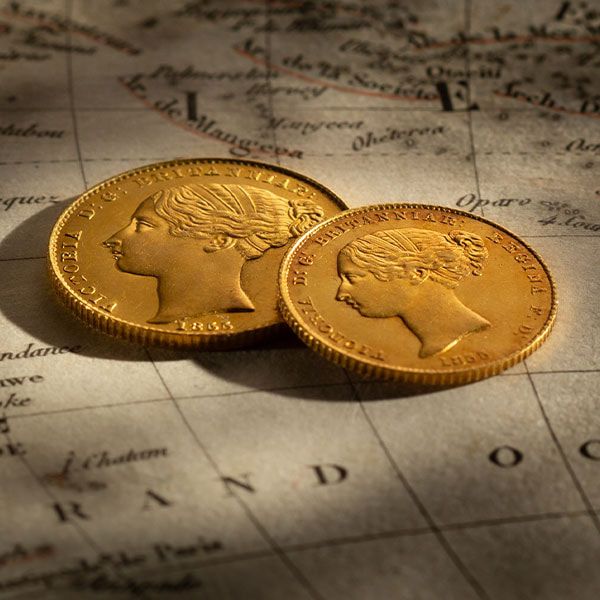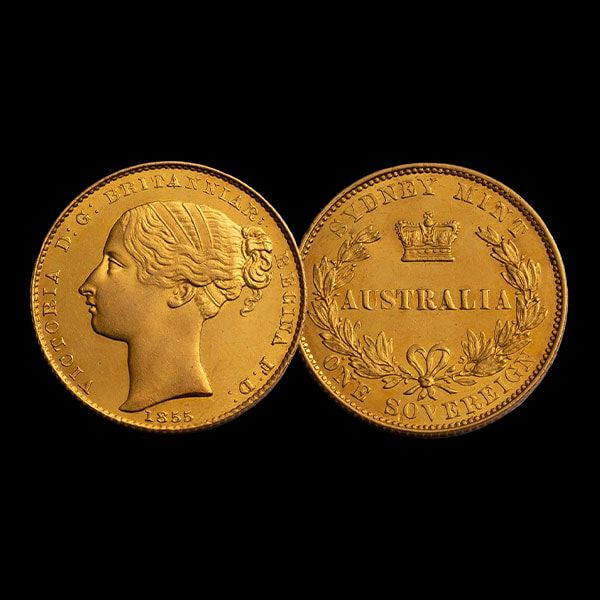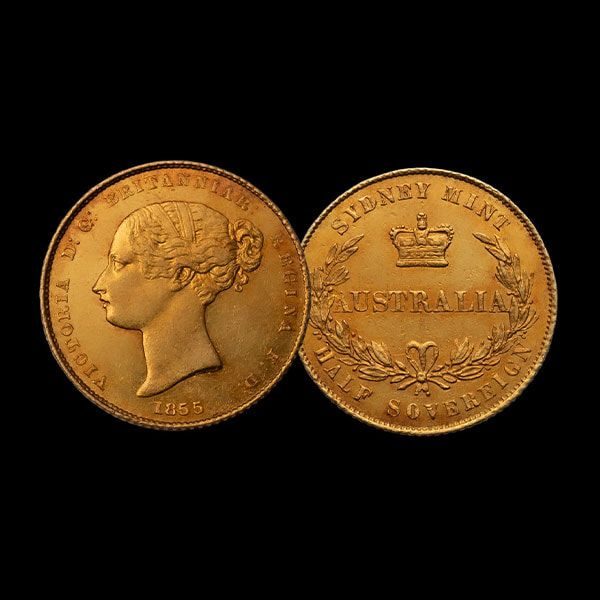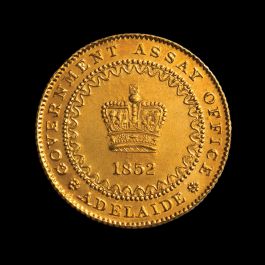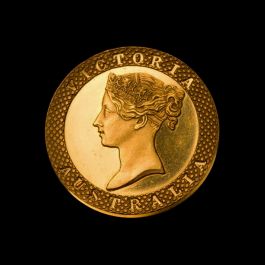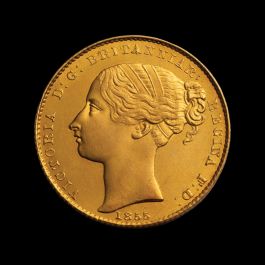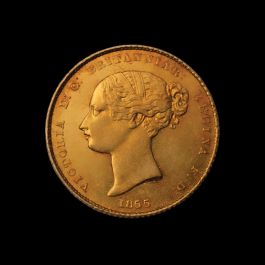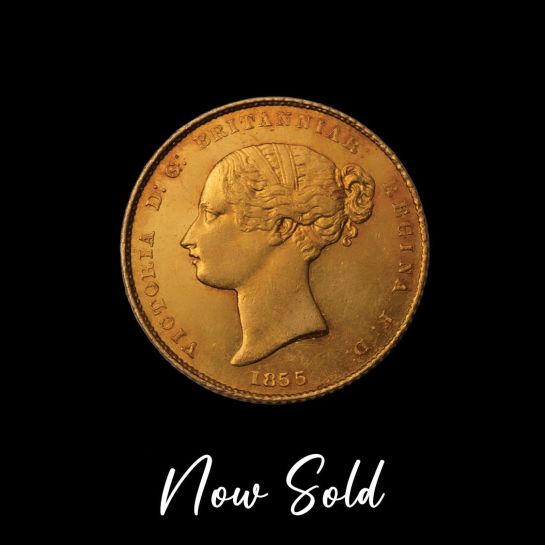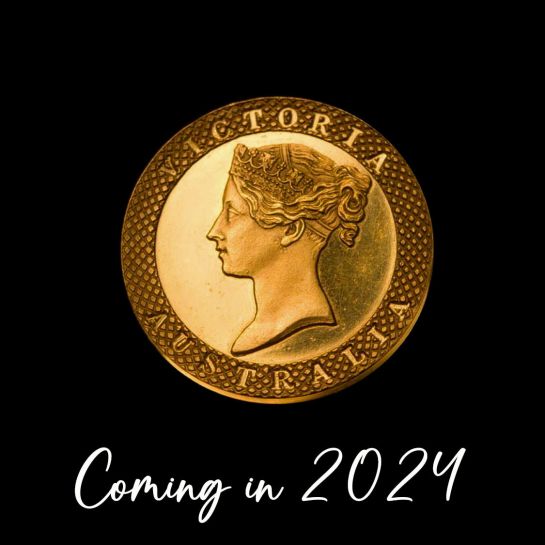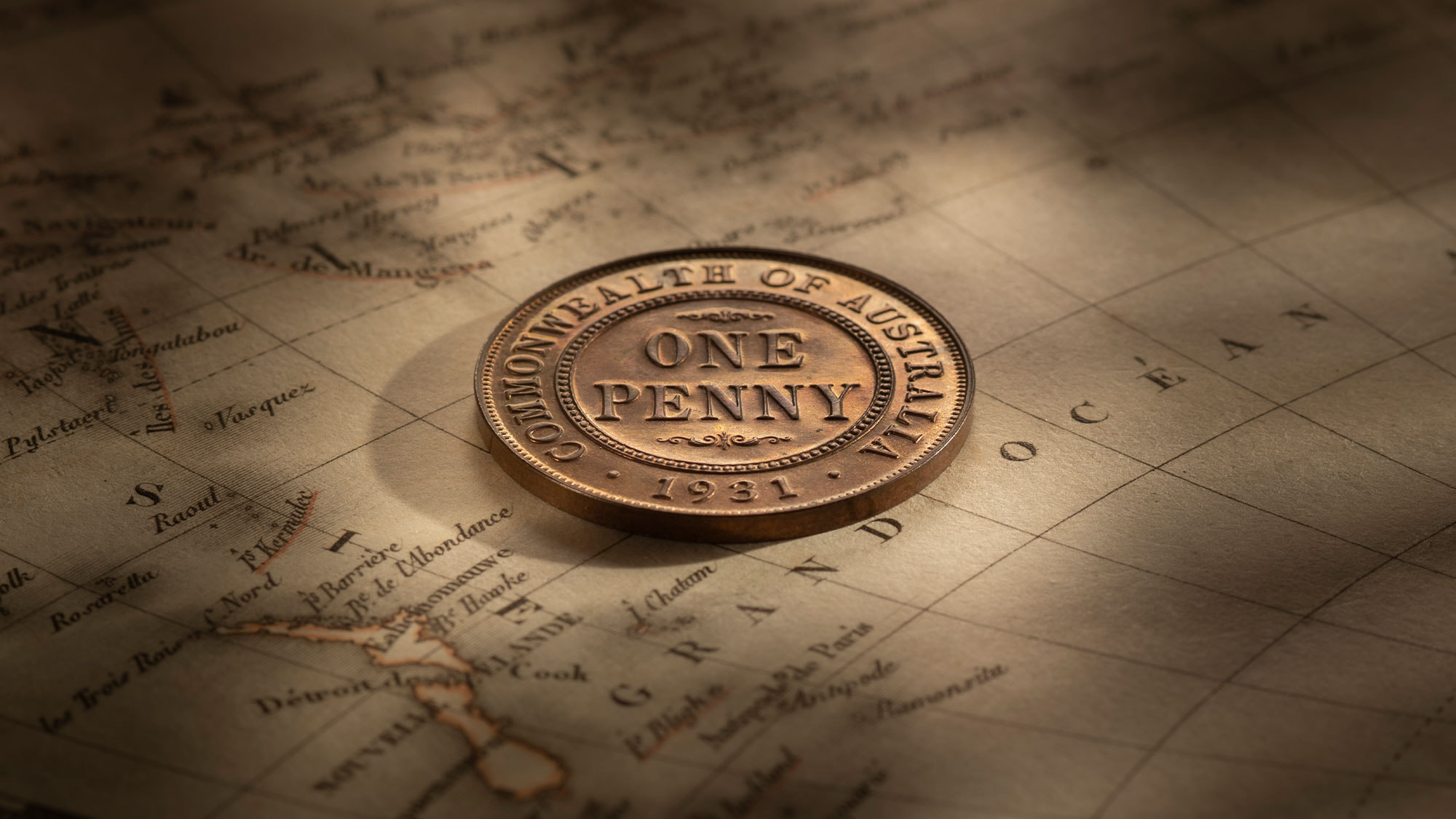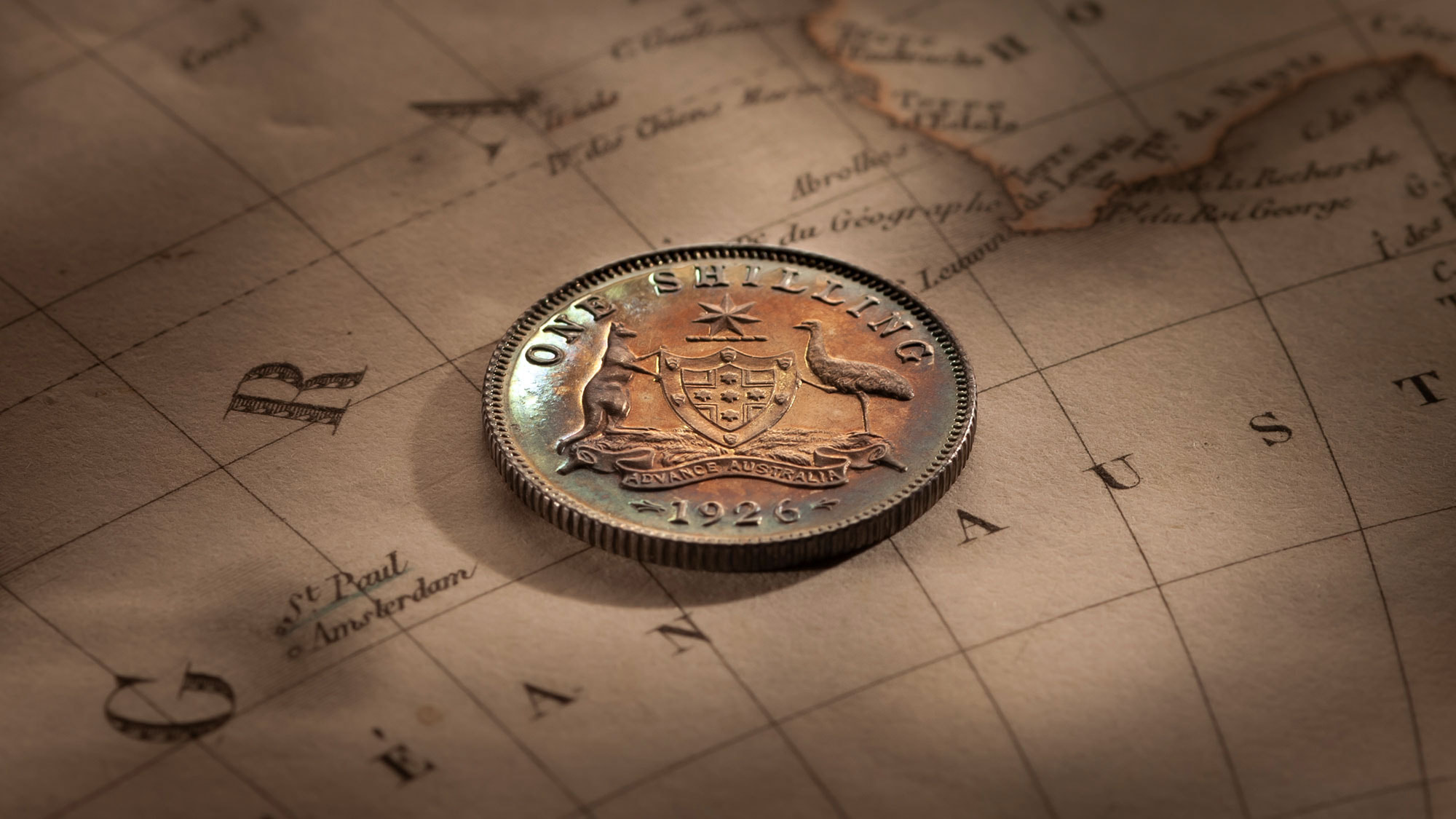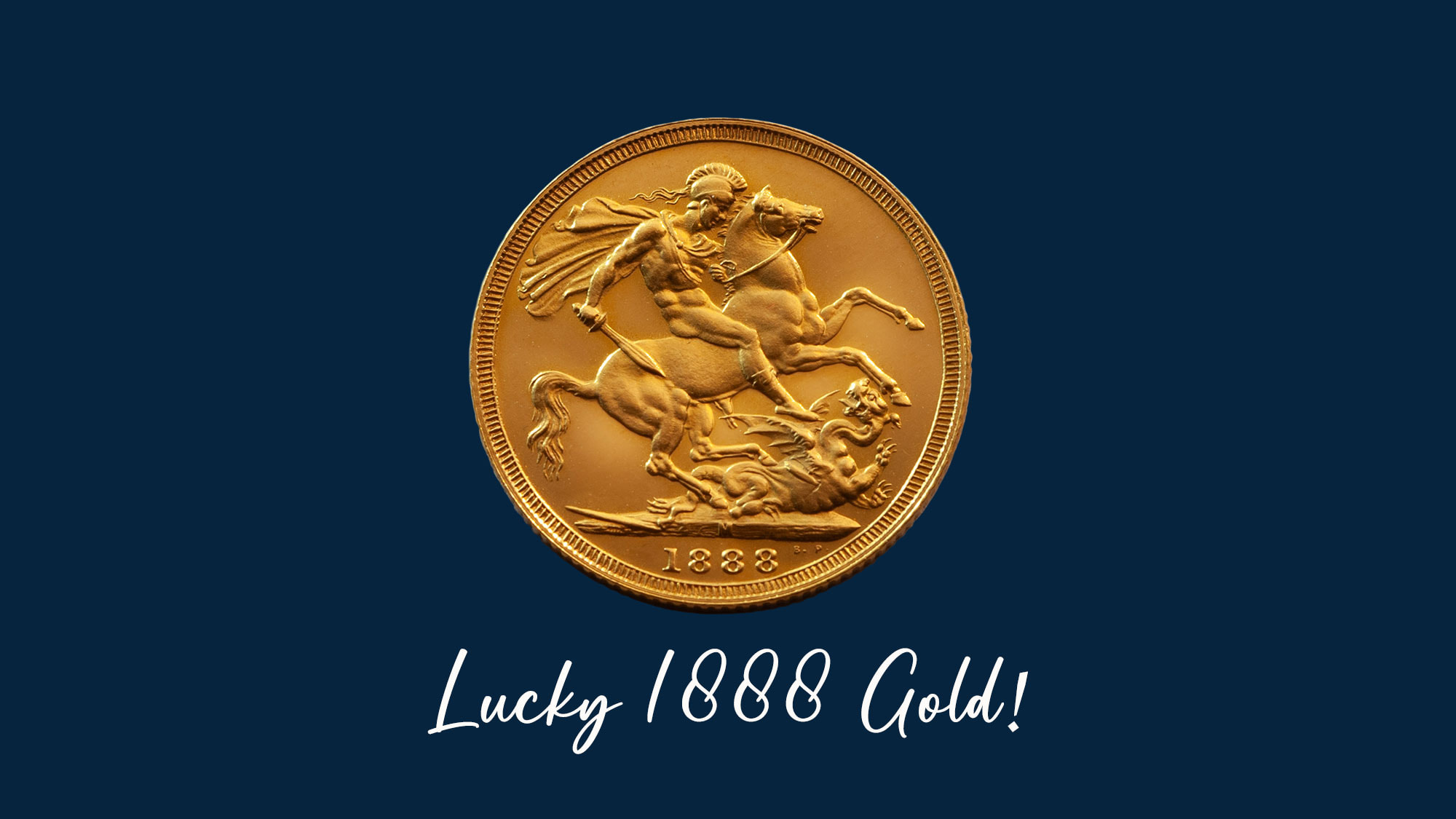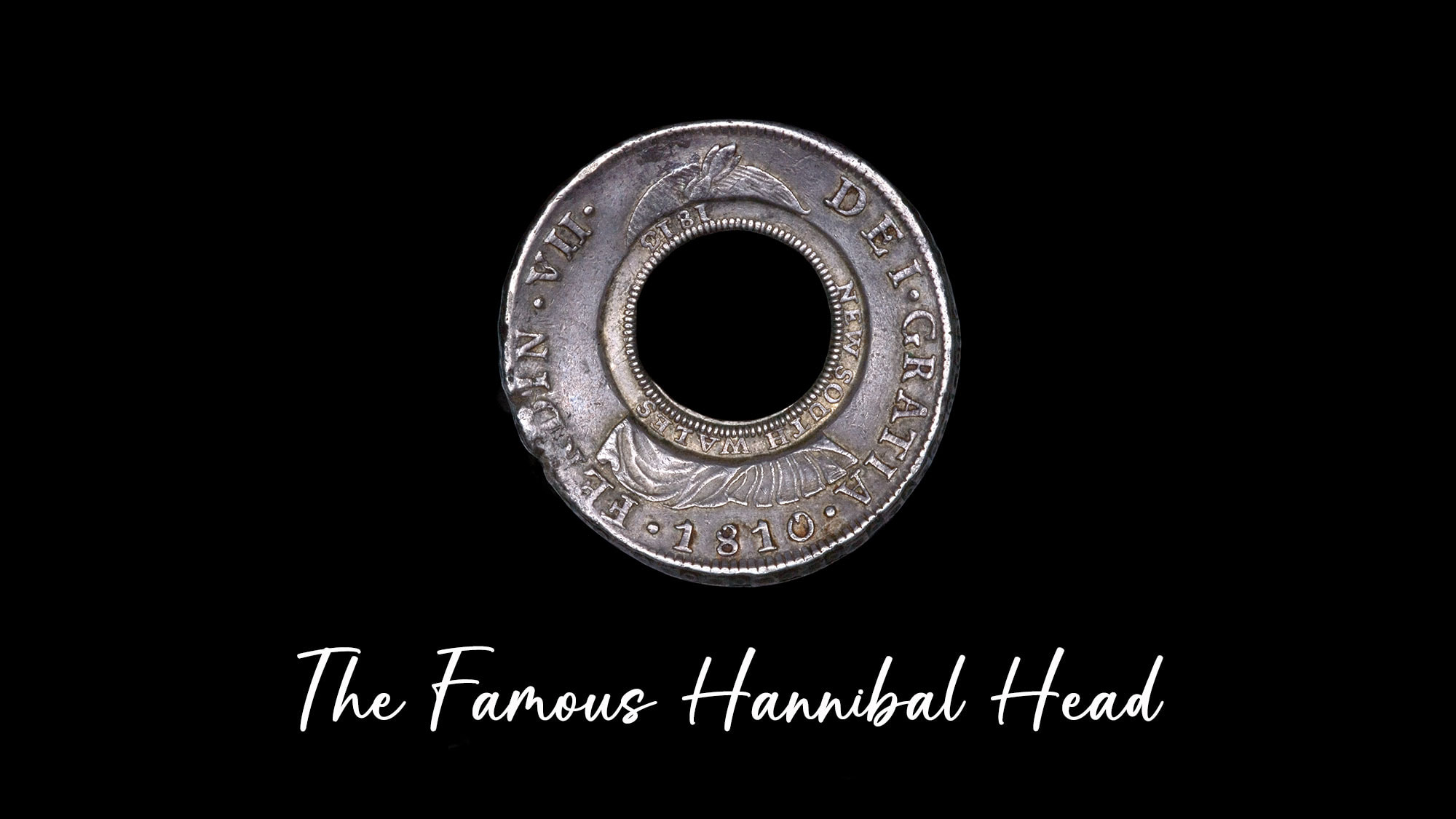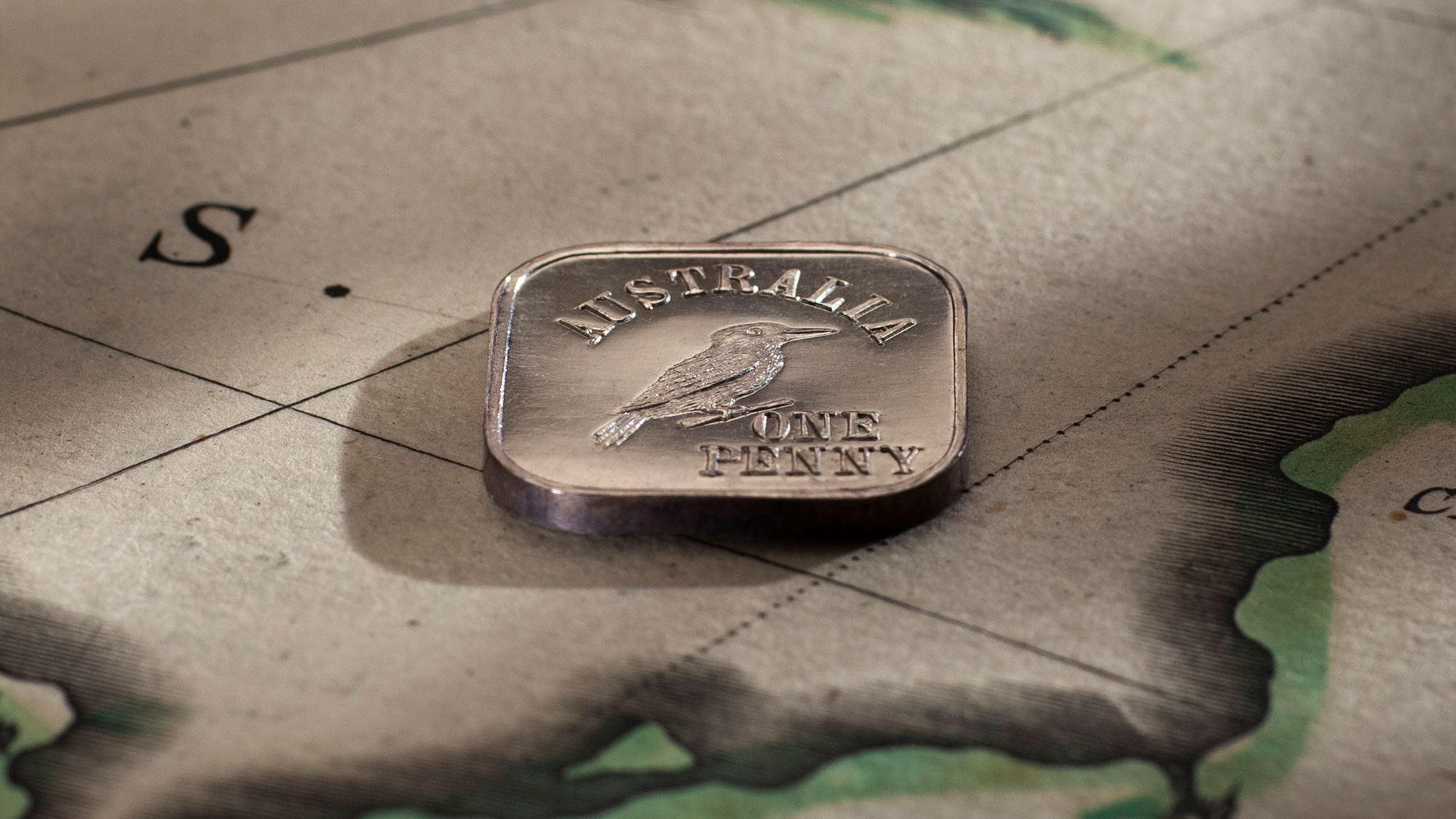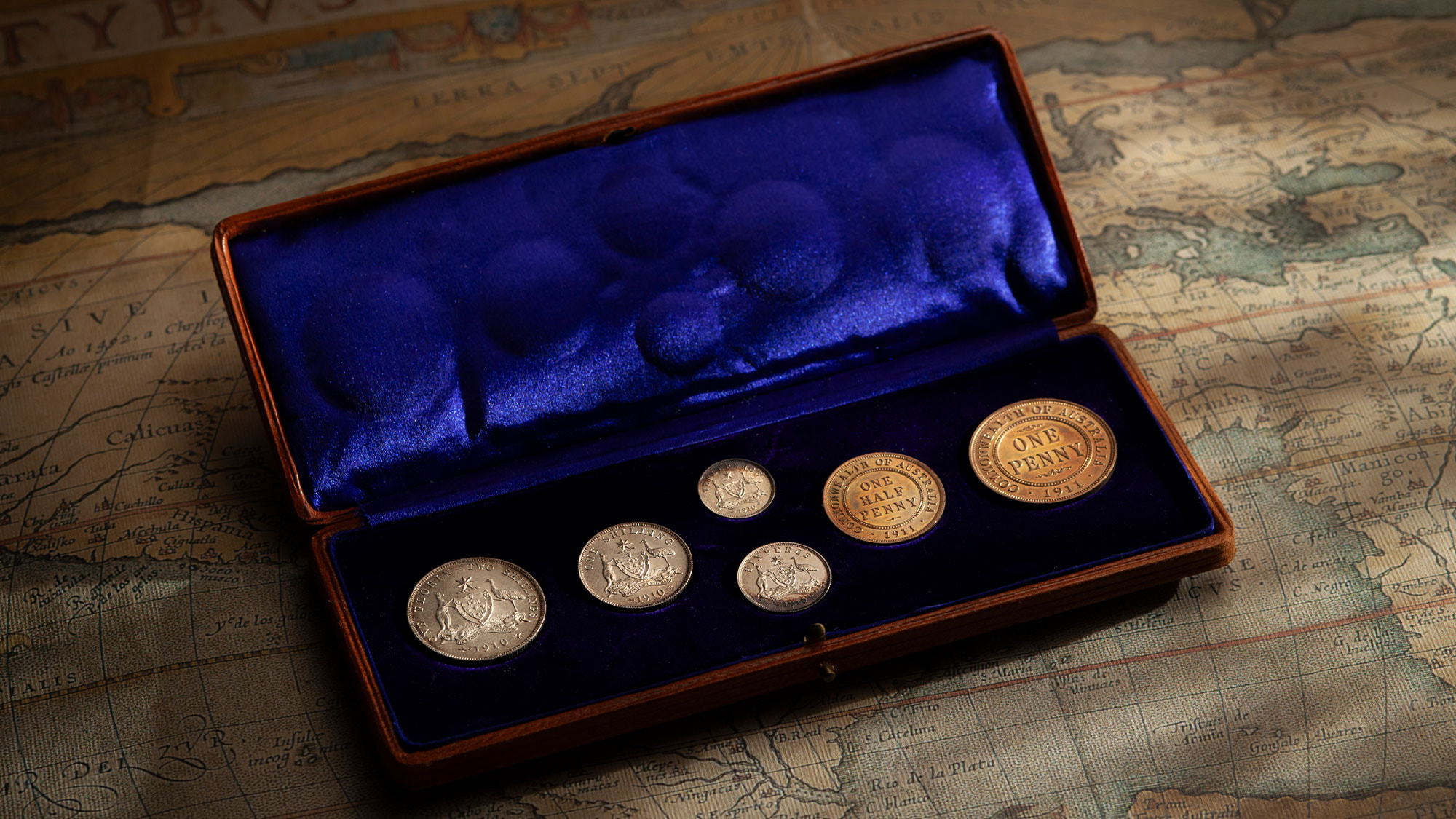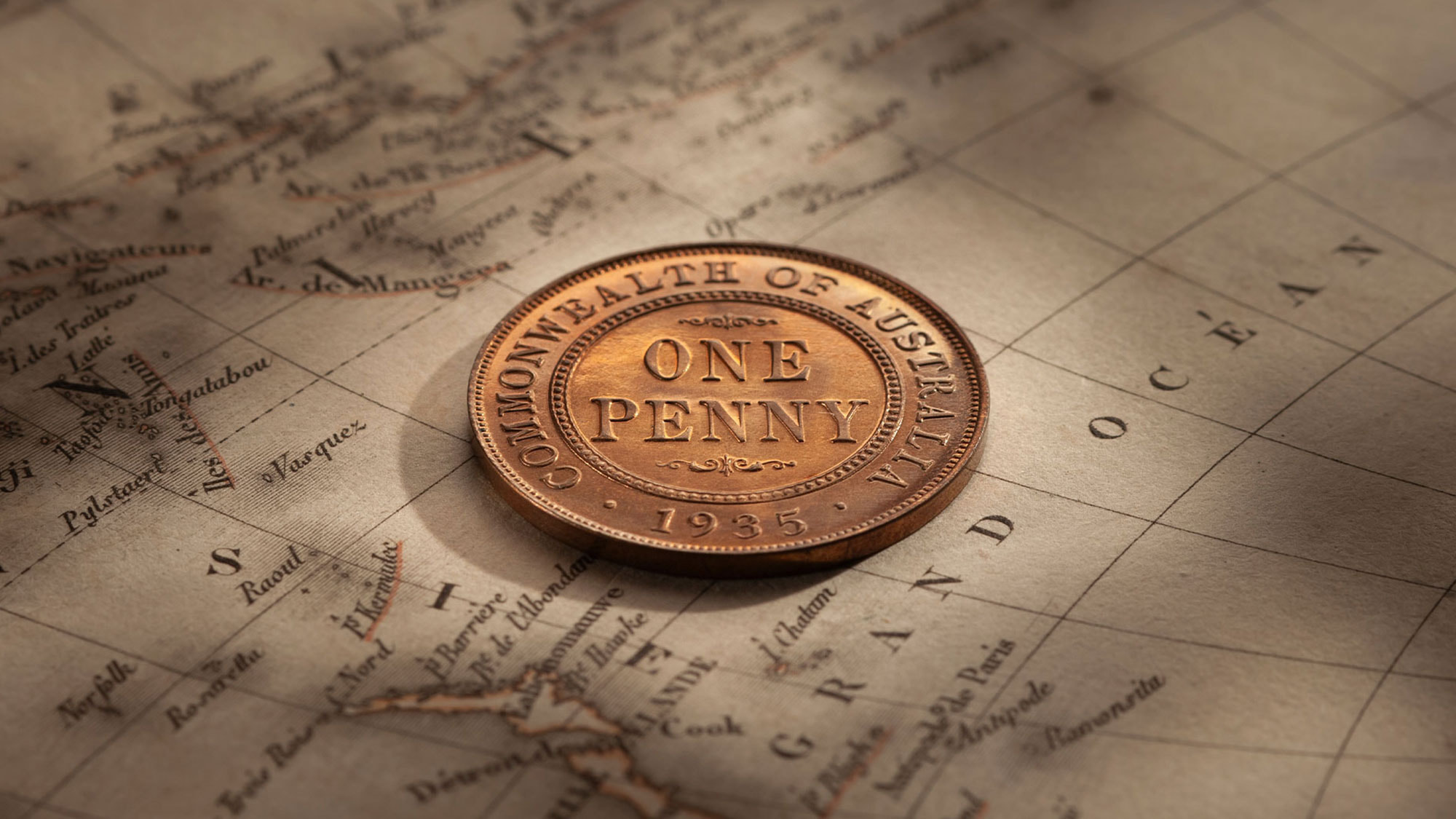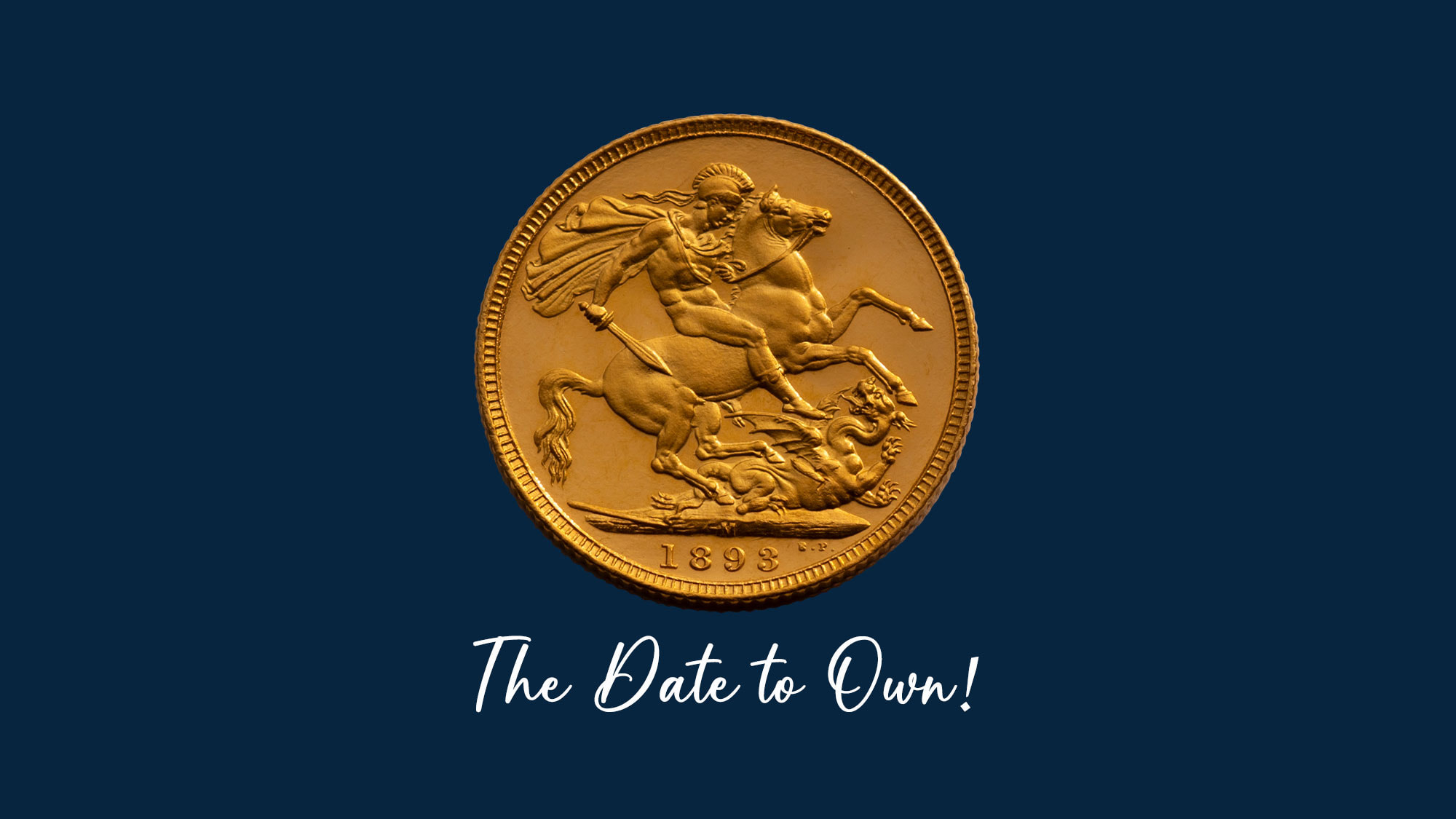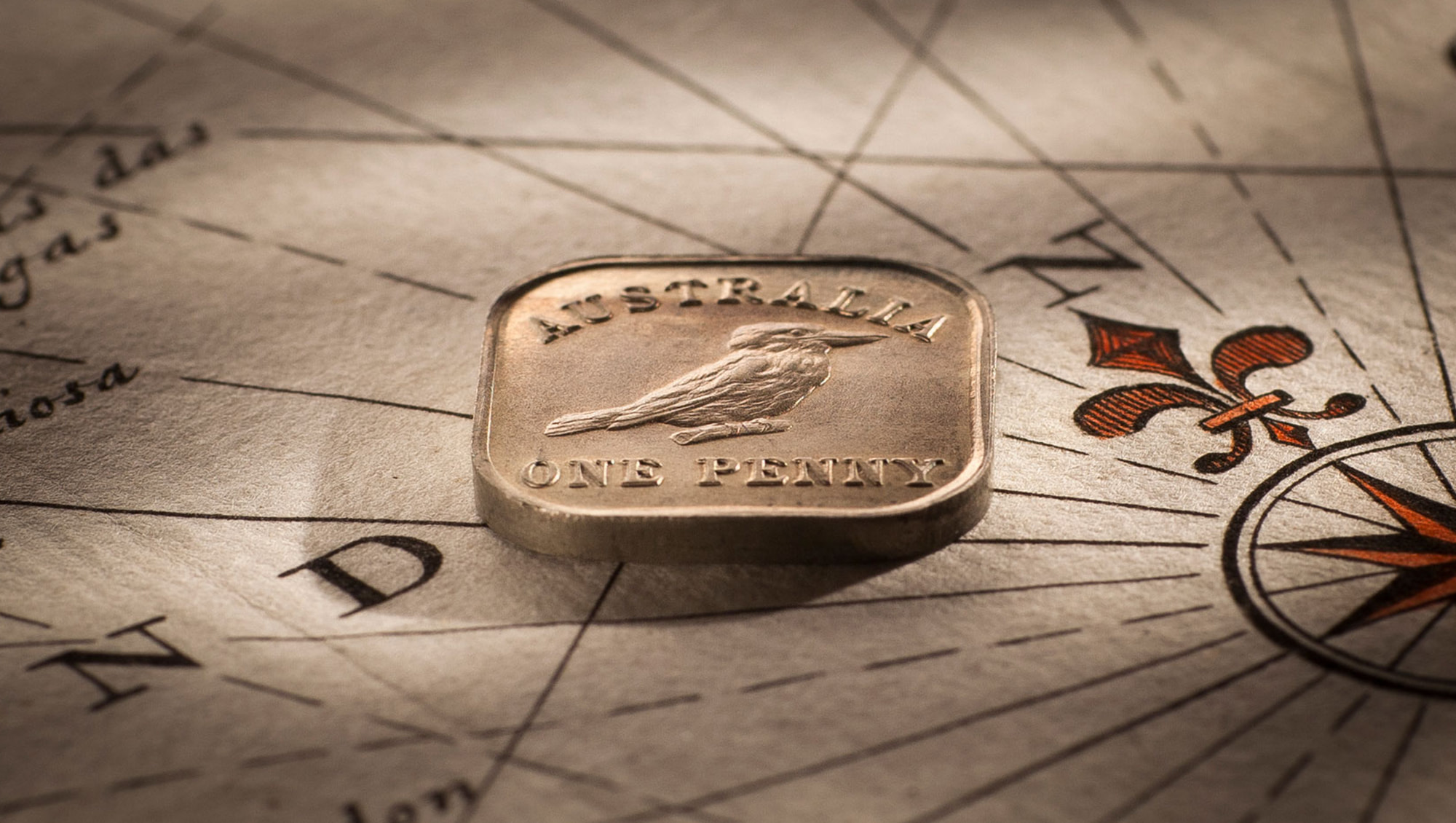The 1855 Sydney Mint Sovereign struck 23 June 1855. Australia's first sovereign and the first coin of the realm minted at an overseas branch of the Royal Mint London.
The journey to an official Australian gold coinage lasted four years, the quest beginning in 1851 with the discovery of gold near Bathurst, New South Wales and Ballarat in Victoria. The journey was completed four years later with the opening of a mint in Sydney. And the striking of our first royally approved gold coinage, the 1855 Sydney Mint Sovereign and 1855 Sydney Mint Half Sovereign.
Gold was Australia's first major mineral resource. Its discovery had a profound impact on the nation's social and political development, underpinning the abandonment of the penal system on which the settlement of Australia was based.
Australia's new-found wealth in the 1850s stimulated a vast influx of free immigrants, bringing new skills and professions and contributing to a burgeoning economy. Between 1851 and 1855, Australia's population doubled.
It is one of the most eventful and extraordinary chapters in Australian history, transforming the economy and the nation's social order, marking the beginnings of a modern multi-cultural Australia.
There were five Australian colonies by mid-1851, (Victoria, Western Australia, Tasmania, South Australia and New South Wales) with each in agreement that a gold coinage should be locally produced, that the six-month round trip for shipping gold to and from London was impractical and an impediment to business.
Each colony however was experiencing different social and financial pressures from the gold rush and each colony, therefore, had different views as to what form a gold coinage should take. And different views on its urgency.
1852, 1854, 1855 ... the journey to a gold coinage.
In 1852, the colony of South Australia was on the verge of bankruptcy, in desperate need of hard currency to exchange for the digger's gold and to stimulate a return to commerce. Using a loophole in regulations, South Australia passed legislation that supported the production of gold coins, the 1852 Adelaide Pound. But, it was a temporary measure, a one-year only coin, the legislation expiring in January 1853.
The second attempt to introduce a gold coinage involved the establishment, in 1854, of a private mint in Melbourne, the Kangaroo Office. Financed by British entrepreneurs, the main player was William Joseph Taylor, a British businessman. While the mint operated for a few years and ultimately failed, it did leave an important legacy for today’s collectors in the form of the Kangaroo Office W J Taylor Gold coins.
The third attempt to introduce an Australian gold coinage came from New South Wales. The colony followed protocols and in 1851 petitioned the Home Office in London for a branch of the Royal Mint. Approval was granted in 1853, the Sydney Mint opening two years later issuing Australia's first official gold coinage, the 1855 Sydney Mint Sovereign and 1855 Sydney Mint Half Sovereign.
The Sydney Mint struck a modest 502,000 Sovereigns and an even more modest 21,000 Half Sovereigns in 1855. In the second year, sovereign and half sovereign production rose to 981,000 and 478,000 respectively. Sovereign mintages were cranked up thereafter. In its first ten years of operation, Sydney Mint annual sovereign production averaged 1.45 million coins. Correspondingly, Sydney Mint Half Sovereign mintages remained modest, averaging 285,000 coins.
For collectors, the prize is those coins struck in the first year of opening of the Sydney Mint, the 1855 Sydney Mint Sovereign and the 1855 Sydney Mint Half Sovereign. The coins are respected for their rarity, their everlasting history and are in demand worldwide.
1855 Sydney Mint Sovereign and 1855 Sydney Mint Half Sovereign
In 1851, the Sydney Morning Herald published an editorial championing the establishment of a branch of the Royal Mint in Sydney to buy gold at full price and strike it into sovereigns and half sovereigns.
The plan for a branch of the Royal Mint received great support from the diggers. Solid opposition came from the banks and a prominent group of private individuals both of whom had become major buyers of gold on the fields at prices discounted well below the full London price. Profits were at stake! Both factions had earlier joined forces to quash a proposal for a Sydney Assay Office that would have also impacted negatively on their commercial interests.
While it is true that New South Wales had in 1851 formally petitioned the home office in London for a branch of the Royal Mint, the decision had already been made in the British Parliament to give the colonies greater autonomy and establish a branch mint to allow them to strike coins of the realm, the sovereign.
The Sydney Mint would strike sovereigns and half sovereigns to exactly the weight and fineness levels at the Royal Mint but they would have their own design. This was to protect the international reputation of the imperial gold coins in the event that Sydney was unable to meet the exacting standards demanded of the coin.
On the 19 August 1853 Queen Victoria gave formal approval to establish Australia’s very first mint at or near Sydney in New South Wales. In the same year, the Royal Mint London prepared designs of Australia’s first gold coinage and manufactured the dies.
The sovereign and half sovereign obverse design was a filleted bust of Victoria, only slightly different to that used on British sovereigns. The obverse quickly fell out of favour and James Wyon was ordered to engrave a new obverse that would be uniquely Australian to easily distinguish the colonial sovereigns from their British counterparts. To this end, a new portrait was introduced in 1857 that featured Queen Victoria with a banksia wreath in her hair instead of the band.
The reverse design was based loosely around contemporary reverse designs of the British sixpence and shilling. Its strong point of difference to the British sovereigns was the inclusion of the words 'Australia' and 'Sydney Mint'.
The use of the word Australia, a fascination with historians. At the time the nation was operating as separate colonies. Australia did not operate under a single Government until Federation in 1901.
The first Deputy Master of the Sydney Mint was Captain Edward Wolstenholme Ward, a trained member of the Royal Engineers.
Ward arrived in the colony in October 1854 on the ship Calcutta, along with other members of the Royal Engineers, a sergeant, three corporals and twelve privates. The group was deposited on Circular Quay with the bales and boxes of Sydney's new mint, along with the dies.
This 1855 Sydney Mint Half Sovereign is the very finest example of the nation’s first half sovereign. The coin is the jewel in the crown of Australia's half sovereign series with an impeccable pedigree.
The Sydney Mint was established in a wing of the 'Rum Hospital' in Macquarie Street, Sydney. The mint began receiving gold on 14 May 1855 and issued its first gold sovereign soon after on June 23.
In their infancy the Sydney Mint sovereigns and half sovereigns were legal tender only in the colony of New South Wales.
In January 1856, the British tested the quality of the colonial gold coins and the results showed that they had a higher intrinsic value than their British counterparts, primarily due to their 8.33% silver content. Once these facts became known, profiteers began melting them down.
The colonial gold coins became legal tender in Tasmania and Western Australia in 1856. South Australia and Victoria were reticent to enshrine the Sydney Mint as Australia's official mint as each colony had independently requested their own and were miffed at missing out.
By 1857, the legal tender scope was widened to include all Australian colonies and Mauritius, Ceylon and Hong Kong. In 1868 the Sydney Mint Sovereigns and Half Sovereigns became legal tender throughout the British Empire.
The design of the Sydney Mint Sovereign lasted until 1870 and the Half Sovereign until 1866. It was the very last time the word Australia appeared on our gold sovereigns. From 1871, Australia's sovereigns and half sovereigns took on a traditional British design.
1852 Adelaide Assay Office Gold One Pound
Ironically, the discovery of gold in the eastern states almost sent the colony of South Australia broke as the mass movement of population from the cities to the Victorian gold fields drained the banks of coins and brought business almost to a standstill.
And whilst it may be perceived that the economy would bounce back when the diggers returned to their home state with their findings, it only exacerbated the problem. The gold boom created an excess of wealth, one that could not be put into circulation. The problem, which had plagued the colonies since the early days of settlement still existed - a lack of hard currency – to exchange for the gold and to stimulate and underpin a return to commerce.
The proposed solution to South Australia’s economic crisis was the establishment of an Adelaide Assay Office that would purchase gold from the Victorian fields at a higher price than paid in Melbourne. And that would strike gold ingots that could be exchanged for banknotes at a set rate. And could used by the banks to back their note currency as though they were sovereigns.
There is little doubt that Governor Young had exceeded his powers by opening what was effectively a mint that had no sanction from the Home Office in London.
To validate their actions in circumventing Royal protocols, the South Australian Legislators found a loophole in the Government’s regulations and passed the Bullion Act, that allowed them to create their own mint and strike the ingots.
The Bullion Act No 1 of 1852 has a record unique in Australian history. A special session of Parliament was convened to consider it. Parliament met at noon on the 28 January 1852. The Bill was read and promptly passed three readings and was then forwarded to the Lieutenant Governor and immediately received his assent. It was one of the quickest pieces of legislation on record, with the whole proceedings taking less than two hours.
Thirteen days after the passing of the Act, on 10 February 1852, the Government Assay office was opened. Its activities were supported by a state government initiative to provide armed escorts to bring back the gold from the Victorian diggings.
Six months after the opening of the Assay Office, the business community began agitating for a gold coinage. Legislation was amended and on 23 September 1852, the Assay Office issued its first gold One Pound, minted from 22 carat gold and weighing 8.81gm.
The Bullion Act was intended only as a short-term solution, its operation limited to twelve months only, expiring in January 1853. No attempt was made to extend it or continue the coinage after the period originally fixed.
Only a small number of Adelaide Pounds were struck and very few actually circulated, the official and recorded mintage of the nation’s first gold coin, 24,648. When it was discovered that the intrinsic value of the gold contained in each piece exceeded its nominal value, the vast majority were promptly exported to London and melted down.
This is a unique opportunity to acquire an inspiring Uncirculated example of Australia's very first gold coin. Struck in the first production run, this 1852 Adelaide Pound Type I is offered in a miracle state.
Australia’s first gold coin, a One Pound, was struck on 23 September 1852 at the Government Assay Office in Adelaide, South Australia. The first production run of Adelaide Pounds, used an obverse die with a crown and a reverse die with a simple, elegant beaded inner circle.
During the first run, pressure was applied to the edges to ensure that the denticles and the legend were strong. Less than one hundred coins were produced before a crack developed in the die, forcing an interruption to production and the hasty preparation of a replacement die.
Feeling the strain to resume production, Joshua Payne opted for a simpler version of the reverse die, the legend and value in plain lettering. He also changed the design of the inner border on the reverse die, duplicating that already in place on the crown side. Production was resumed with the second die and a further 24,000-plus coins minted, referred to as the Type II One Pounds.
By producing two different dies Joshua Payne clearly distinguished between those coins struck in the modest first run. And those from the more substantial second run.
And in so doing created a rarity of the highest order. The Gold One Pound struck during the very first production run of the nation's first gold coin, better known as the Type I One Pound.
What we know today is that less than forty Type I Gold One Pounds are in collector’s hands. And perhaps six times that figure of the Type II examples. Both rare. But the Type I One Pound excruciatingly rare.
1854 Kangaroo Office, Melbourne
The coins struck at Melbourne’s ‘Kangaroo Office’ have been owned by some of the greatest collectors of our time; Montague, King Farouk of Egypt, J J Pitman and Tom Hadley of Quartermaster fame, to name but a few.
The Kangaroo Office was a bold plan by English entrepreneurs to establish Australia’s first privately run Mint. The planning phase began in London, in 1853. Coining operations commenced in Melbourne in May 1854. Three years on, after substantial losses, the mint was closed. While the plan had all the hallmarks of a farce, it left an important legacy for today’s collectors and historians.
William Joseph Taylor was an Englishman, and by trade an engraver and die sinker, active in the numismatic industry producing both coins and medals. He was an entrepreneur. And a shrewd businessman.
Towards the end of 1852 Taylor became aware that gold could be bought from diggers on the Ballarat fields at greatly reduced prices. His plan was to establish a private mint in Melbourne, strike gold coins and release them at their full value in London. To thwart currency laws, the designs were made to look more like weights than coins. Taylor himself cut the dies for a 2oz, 1oz, 1/2oz and ¼oz gold piece, each dated 1853.
Taylor formed a syndicate with two colleagues, Messrs Hodgkin and Tyndall: the three investing £13,000 in the enterprise. They chartered a fully rigged 600 ton vessel to transport the coining press, the dies and two employees, Reginald Scaife (manager) and William Morgan Brown (assistant).
The vessel was aptly named ‘The Kangaroo’, then, as now, a symbol of Australia. Taylor’s mint was known as the Kangaroo Office and was situated near Melbourne’s Flagstaff Gardens in what is now Franklin Street West.
‘The Kangaroo’ arrived at Hobsons Bay on 23rd October 1853, and the huge coining press was deposited on the wharf. And there it sat. Unfortunately, it was too heavy to transport. The only option was to take it apart and move it, piece-by-piece, to the Kangaroo Office, where it was reassembled and put into working order.
The Kangaroo Office eventually commenced operations in May 1854.
The coins were struck in gold and featured a heavy broad engine-turned rim with a squatting kangaroo facing right and in sunken letters on the rim the words PORT PHILLIP AND AUSTRALIA.
The reverse depicted the weight of each piece in figures with the words PURE AUSTRALIAN GOLD above and the weight in letters embedded into the rim. Again the emphasis was on the weight rather than a value so as not to be construed as a ‘coin’.
The Kangaroo Office operated for three years striking examples from the original dies, although how many of each is unknown.
We do know that William Morgan sold a complete set of the four kangaroo patterns to the British Museum and was said to have informed the museum staff that a total of 27 sets were struck, of which all but one had been melted down.
Reginald Scaife also told Sydney numismatist Dr Walter Roth that only one set had been issued in Melbourne. This set was displayed at the 1854 Melbourne Exhibition but what happened to it after that is unknown.
Unique W J Taylor Kangaroo Office Gold Sixpence. Also coming in 2025, W J Taylor Gold Shilling. Both in a 'brilliant state'.
Between one and three pieces have come to light over the last century. The US Collection in Philadelphia has 1/2oz and 2oz pieces. In 1892, Sotheby’s London sold a 1oz, 1/2oz and ¼oz coin as part of the famed Montagu Collection: the 1/4oz eventually becoming part of the Quartermaster Collection. In 1954, US collector J J Pitman acquired the 1oz and 1/4oz pieces contained in the collection of King Farouk of Egypt. The coins to this day remain missing, either stolen or melted down.
In 1976 a staff member of Sotheby’s London noticed a 1/4oz piece dangling from a client’s charm bracelet. The mount was removed, the coin later selling for $17,180. That piece also made its way into the Quartermaster Collection.
The Kangaroo Office was under financial pressure right from the outset. By the time the mint was operational gold, which had been £2/15/- per ounce when the plan was hatched, had moved up to £4/4/- an ounce. And there was a glut of English sovereigns in circulation.
Despite the financial challenges of the operation Taylor was unconvinced that his days as a coin designer and manufacturer were at an end. In 1855 he produced dies for the striking of a sixpence and shilling in gold, silver and copper. This was his first attempt at producing a piece depicting a value rather than a weight.
The coins display the same broad engine-turned rim, the obverse featuring a superb portrait of Queen Victoria with VICTORIA and AUSTRALIA embedded in the rim. The reverse features the denomination in figures at the centre and in letters embedded in the rim above.
Taylor operated his Kangaroo Office for three years during which time he sustained substantial losses. With all hope of a profit gone, the dispirited promoters in London issued instructions for the Kangaroo Office to be closed.
Shop Coinworks
© Copyright: Coinworks

